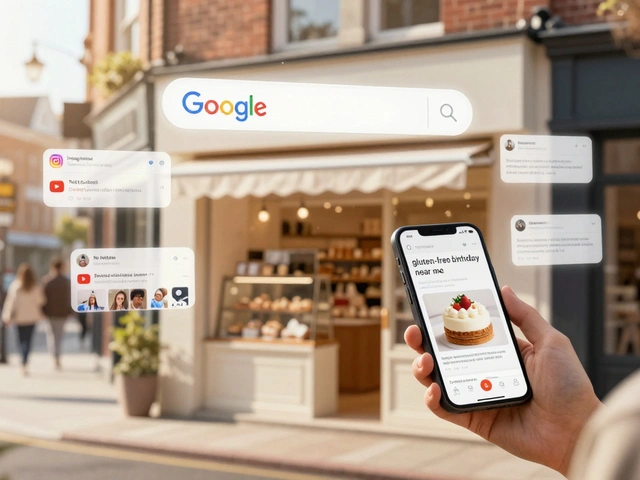Just when you think you’re scrolling through harmless social media memes or reading another online review, someone, somewhere, is reshaping your thoughts. Welcome to the information battlefield, where propaganda isn’t just about big banners or dramatic slogans—it's everywhere, layered inside tweets, TikToks, news headlines, and even product endorsements. The wild thing? Most of it slips right under our radar. Here’s where ChatGPT, OpenAI’s conversational giant, is stepping in and flipping the script. Instead of only being a handy assistant for drafting emails or brainstorming recipes, it’s emerging as a relentless sleuth in the propaganda game.
Seeing What Humans Miss: How ChatGPT Detects Subtle Influences
If propaganda is the art of shaping truth, technology is now the brush. Until recently, analysts were limited by sheer volume—tracking millions of posts, news bites, and comment threads just wasn’t humanly possible. But ChatGPT can comb through text at breakneck speed. It scans for loaded words, coded language, repeating narrative patterns, and even odd grammar quirks often dropped in by bots and troll farms.
Take the 2024 US Presidential elections. Researchers used GPT models to scan forums and social media for coordinated misinformation, and uncovered not just obvious fake accounts, but sophisticated campaigns using subtle wording to tilt opinions. The language patterns it caught would have easily slipped through human review. Another sharp example came in February this year, during the Southeast Asian social unrest, where GPT-based tools noticed an unusual surge in copy-paste posts using specific regional idioms—traced back to coordinated groups aiming to sway local sentiment.
ChatGPT’s ability doesn’t stop at English. It handles over 50 languages (as of 2024), which means it can scan and analyze disinformation everywhere from Russian Telegram chats to Spanish-language news networks. The higher the volume and velocity, the better AI tools get. One of the unexpected bonuses: these AI engines don’t get tired, overlook things after a long workday, or bring personal bias—unless it’s accidentally coded in (which, by the way, is a hot topic among developers).
How Propaganda Disguises Itself and Why AI Has the Edge
Propaganda in 2025 really doesn’t look like those black-and-white war posters or fiery radio speeches. Now, it blends into everyday content. Sometimes it's a relatable story or a viral meme, sometimes it’s a news article with just a few words tweaked. There are even social bots that build a whole fake online persona, complete with ‘family’ photos and regular status updates. Old-school detection methods—like hunting for duplicate content or unverified sources—just don’t cut it anymore.
Here’s where the latest GPT-powered systems throw a wrench in manipulator’s plans. They’re not just looking at the surface. Instead, they break down things like linguistic sentiment, narrative framing, and semantic tricks. For instance, if a coordinated group floods a subreddit or comment section with the phrase “just asking questions,” AI can recognize the rhetorical tactic as a ‘sealioning’ maneuver (yep, it’s a real thing: annoying someone with persistent, bad-faith questions to derail discourse). That’s not something you spot at first glance.
Another tip: propaganda often works by omitting key facts or framing them very selectively. Instead of saying, “Study X proves Y,” GPT might spot 50 rewritten versions of a half-truth—like “study X suggests possible links,” hiding all sorts of uncertainties or caveats. The AI can flag these, classify the degree of manipulation, and even map out how the false message morphs and travels platform-by-platform.
Want to get more hands-on? Several open-source projects now let researchers and journalists use GPT detectors to custom scan datasets. You feed it thousands of tweets, Reddit threads, or news headlines—it spits back clusters of suspicious narratives, recurring phrases, and probable bot origins. In Brisbane’s own city council elections this March, AI flagged a suspicious campaign where dozens of seemingly real locals criticized public safety. The origin? A single marketing agency that coordinated the effort through dozens of dummy accounts. No human could have linked them so quickly.

Human-AI Teamwork: Amplifying Analysis and Avoiding Pitfalls
Now, is ChatGPT perfect? Nope. No tool is. While its ability to flag certain turns of phrase or point out ‘networked’ narratives is impressive, it doesn’t truly understand nuance the way people do. Context is everything. What looks like propaganda in one culture might be satire in another. And there’s that issue of built-in bias—since AI learns from internet data, it can reflect overrepresented opinions too. That’s why the gold standard now is human-AI teaming.
Instead of just letting a bot run wild, teams of fact-checkers, journalists, and policy analysts use GPT outputs as leads—not verdicts. They’ll use AI to flag clusters of suspicious posts, then do the heavy-lift of reviewing and contextualizing the evidence. Fact-checking initiatives in Europe, for example, reported a 60% increase in detection accuracy since pairing GPT with human reviewers last year. The model points out oddball phrases and suggests possible links, but trusted experts decode what's happening behind the words. So, it’s less about handing over all the keys to the robots, and more about turbo-boosting what smart, experienced humans already do.
Here’s another fun bit: AI-powered summaries. Say you're a reporter about to cover a protest movement, and you want the quick version of how messaging changed over two weeks. With GPT tools, you can get a summary of narrative evolution, highlight common threads, and track how a single hashtag jumped from niche chat groups onto the global stage. This kind of mapping used to take weeks; now it happens in a few clicks.
But don’t forget to double-check. Sometimes, a meme is just a meme. Sometimes, coordinated posts are just the result of a trending joke. “Garbage in, garbage out” is as true for AI as it is for anything else. Training your tool on good, diverse data and learning to spot false positives is just as important as flagging the real threats. More teams are investing in “explainable AI” features, where GPT will say why it flagged a message—giving users the chance to spot errors or misunderstandings before they go public with a claim.
Staying Ahead: The Future of Propaganda Analysis with ChatGPT
The pace of change is dizzying. Every time social platforms adjust their algorithms or governments roll out new “transparency” rules, propagandists switch tactics—and so must the tools that hunt them. The people building AI detectors—both researchers and everyday journalists—are in a constant race against digital shape-shifters.
This year, GPT architecture leveled up with features like context memory and advanced multilingual support, letting it spot weird narrative jumps across languages and platforms. There’s even an arms race between AI-generated propaganda and AI-generated detection. For every smarter chatbot or meme generator spreading disinfo, there’s a detection tool training on those exact patterns. Weirdly, both sides might end up using the same platforms to tweak and test their messages.
On the upside, wider access means local groups, newsrooms, and educators now have tools that were once reserved for national security agencies. High school teachers in Queensland are running GPT scans to teach students media literacy—showing them how memes and viral posts can be engineered for manipulation. Digital ad watchdogs are using these models to flag influencer deals that sneak political messaging into what look like regular beauty tutorials. The tech isn’t just for big names; it’s in schools, council offices, and community watchdog groups.
One more tip—if you want to get hands-on, there are plugin versions of GPT that work in browsers or plug right into social media feeds. You can skim, highlight, and check messaging trends in real time, all while teaching yourself how to spot the warning signs. The nature of propaganda is to adapt and evolve, but with tools like ChatGPT, everyday people have a fighting chance to stay one step ahead of the digital game. If you can read between the lines, you’re already miles ahead of the bots.





